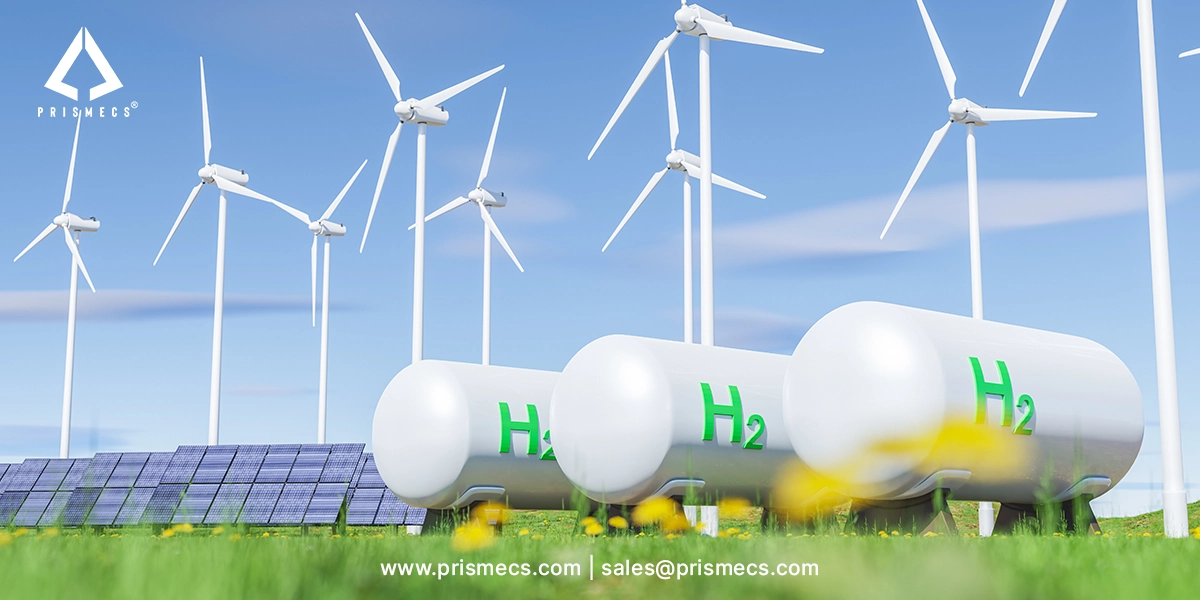
The world is undergoing a significant transformation in how it produces, distributes, and consumes energy. Traditional centralized power grids, which have been the backbone of our energy infrastructure for over a century, are facing numerous challenges. These challenges include vulnerability to extreme weather conditions and the increasing demand for renewable energy sources. In response to these issues, a new paradigm is emerging: decentralized energy distribution through microgrids. In this blog, we will explore the concept of decentralization and how microgrids are transforming the way we generate and distribute electricity.
Microgrids: The Rise of Decentralization
Decentralization represents a shift away from the centralized model towards a more distributed and localized energy system. Microgrids play a key role in this transition. So, what are microgrids, and how do they work? Microgrids are small, self-contained energy systems that can operate independently or in conjunction with the main power grid. They consist of local power generation sources, often renewables like solar panels and wind turbines, energy storage systems (batteries), and advanced control systems.
Reflection on how microgrids can transform energy distribution strategies
Microgrids can supply electricity to a specific area, such as a neighborhood, or industrial facility, and can disconnect from the main grid during emergencies. They have the potential to significantly transform energy distribution strategies in numerous ways, offering a more decentralized, resilient, and sustainable approach to delivering electricity.
Here is a reflection on how microgrids can bring about this transformation:
Energy Independence
Microgrids provide communities, campuses, and industrial facilities with greater energy independence. They can generate and store their electricity, reducing reliance on external sources.
Resilience
Microgrids are designed to withstand power outages and disasters. They can continue to provide electricity to critical infrastructure, such as hospitals and emergency services, during grid failures.
Efficiency
By utilizing locally generated energy and reducing transmission losses, microgrids are often more energy-efficient than centralized systems.
Integration of Renewable Energy
Microgrids can seamlessly integrate renewable energy sources, promoting sustainability and reducing carbon footprints.
Microgrid Global Market Size
In 2023, the United States had installed 692 microgrids, collectively generating close to 4.4 gigawatts of power. Over the past four years, more than 212 of these microgrids, with a combined capacity exceeding 419 MW, have been commissioned.
The global microgrid market is poised for remarkable growth, with a projected trajectory of USD 36.05 billion in 2023 indicating an impressive rise. It is projected to exceed USD 168.64 billion by the end of 2032, with a registered compound annual growth rate (CAGR) of 18.7% anticipated from 2023 to 2032.
The Microgrid Market Size is expected to reach USD 168.64 Billion in 2032, with a CAGR of 18.7%
Energy Paradigm shift by implementing decentralized communities: A Case Study of the Brooklyn Microgrid
| Report Coverage | Details |
| Market Size in 2023 | USD 36.05 Billion |
| Market Size by 2032 | USD 168.64 Billion |
| Growth Rate from 2023 to 2032 | CAGR of 18.7% |
| Base Year | 2023 |
| Forecast Period | 2023-2032 |
Abstract
This case study explores the transformative potential of decentralized energy communities by examining the Brooklyn Microgrid project. As the world grapples with the challenges of climate change and an evolving energy landscape, decentralized energy systems are emerging as a viable solution. The Brooklyn Microgrid serves as a prime example of how local communities can harness renewable energy sources, promote sustainability, and empower individuals to take control of their energy production and consumption. This case study delves into the key aspects of the Brooklyn Microgrid project, its impact on the local community, and its implications for the global energy paradigm shift.
Background
The traditional centralized energy model, reliant on fossil fuels, has contributed to environmental degradation and climate change. To address these issues, a paradigm shift towards decentralized energy communities is gaining momentum. The Brooklyn Microgrid project in New York City, initiated by LO3 Energy, exemplifies the potential of localized energy generation, distribution, and consumption.
Challenges
Some of the challenges faced during the Brooklyn Microgrid Project are mentioned below:
Regulatory Complexity
Navigating energy regulations designed for centralized grids can be difficult.
Interoperability
Ensuring seamless integration with the main grid poses technical and logistical challenges.
Financial Hurdles
High upfront costs for distributed energy resources can deter participation.
Conclusion
The Brooklyn Microgrid case study demonstrates that decentralized communities can lead to a significant energy paradigm shift. By combining blockchain technology with renewable energy sources and local grid management, it showcases the potential for increased sustainability, resilience, and community empowerment. While challenges exist, the positive outcomes of the Brooklyn Microgrid Project suggest a promising future for decentralized energy systems as a means to address the evolving energy needs of our society. This paradigm shift represents a step toward a more sustainable and resilient energy future.
Embrace Decentralized Energy Distribution with Prismecs
Prismecs is revolutionizing the way we think about energy distribution by championing decentralized solutions that empower communities and businesses. Our commitment to sustainability, resilience, and innovation drives us to create cutting-edge solutions that transform the energy landscape. With our expertise in solar energy and battery energy storage systems, we can assist in setting up reliable renewable energy infrastructure. From the installation of solar panels to battery storage, and microgrids, Prismecs is ready to provide valuable insights and comprehensive services. Contact us at sales@prismecs.com to embark on your renewable energy journey.
Tags: Energy Distribution
recent posts

Petrochemicals
6 minutes read
Petrochemical EPC Services for Complex Plant Projects
Petrochemical EPC services are designed to manage complex plant projects, brownfield integration, strict regulations, and tight schedules.

Renewables
5 minutes read
How Renewable Energy Systems Work Efficiently
Discover how renewable energy systems work efficiently to provide affordable, zero carbon energy, overcome storage challenges, and power for a sustain...

I and C Services
7 minutes read
Expert Commissioning Services for Safe, Efficient Operations
Learn how expert commissioning services support safe, efficient, and reliable energy operations across complex industrial and power systems.

Green Hydrogen
7 minutes read
Green Hydrogen Plant Technology Guide
Discover how a green hydrogen plant works, its key technologies, and its role in clean energy. Explore solutions for scalable, carbon-free hydrogen pr...